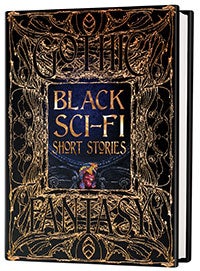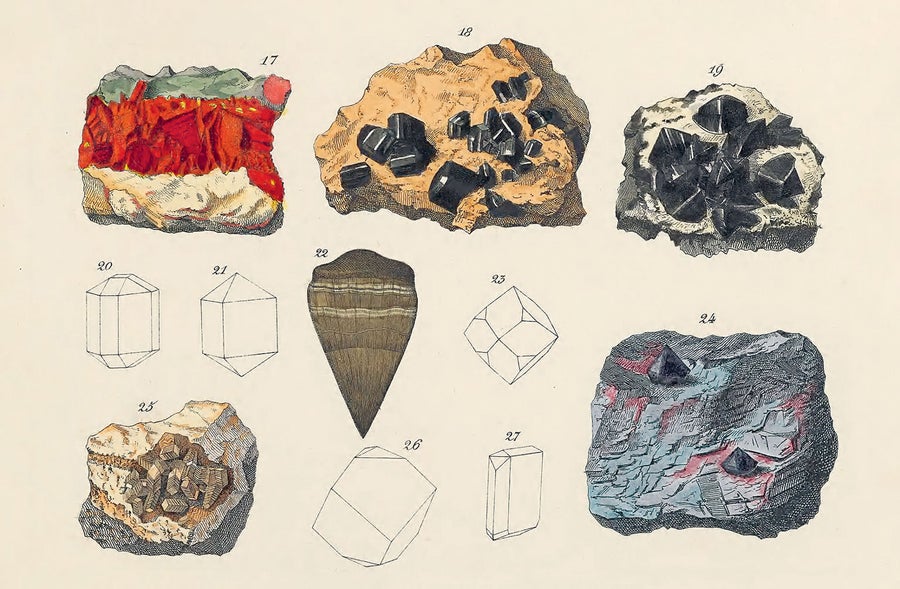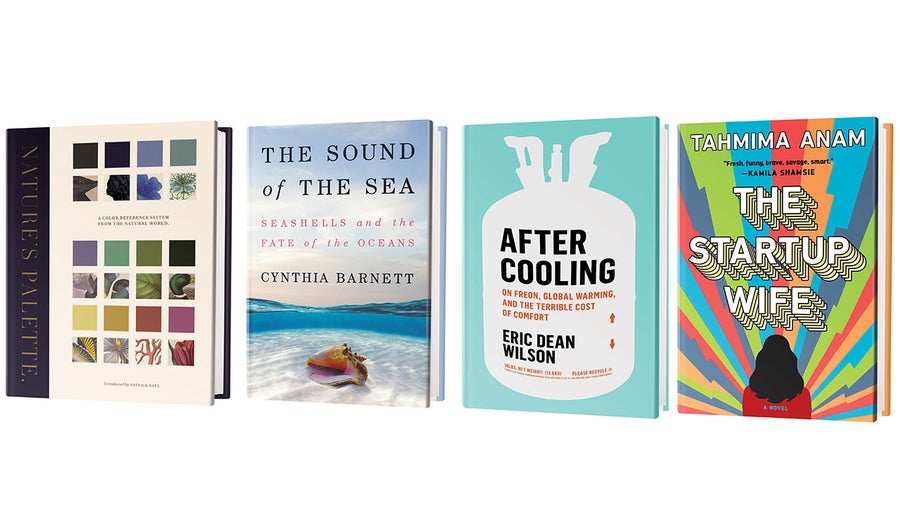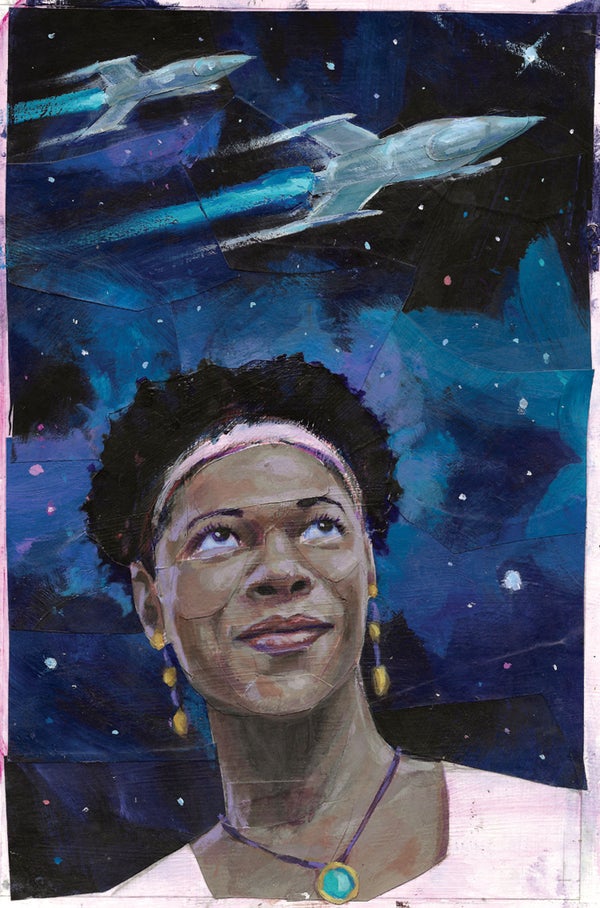Black Sci-Fi Short Stories
edited by Tia Ross
Flame Tree Gothic series. Flame Tree, 2021 ($30)
In a 1970s essay with the provocative title of “Why Blacks Don't Read Science Fiction,” the late African-American writer Charles R. Saunders reflected bitterly on the prevalence of anti-Blackness in the genre. Although white American science-fiction writers “were capable of stretching their imaginations to the point of conceptualizing aliens with sympathetic qualities,” he mused, “a black man or woman in a spacesuit was an image beyond the limits of [their] imaginations.... If blacks appeared at all in the pages of the science fiction pulp magazines, they were presented as offensive ‘darkie' stereotypes.” The genre, as Saunders memorably put it, was “as white as a Ku Klux Klan meeting.”
In the years since Saunders's acerbic observations, Black writers have undoubtedly become more prominent in speculative fiction. But given white men's continual dominance of the genre, nonwhite authors are all too frequently still overlooked. A new collection, Black Sci-Fi Short Stories, aims to correct this, presenting readers with a wide range of short stories—and novellas—from 20th- and 21st-century writers, a number of which have never before been published. A roving set of introductory essays attempts to situate the book in the larger history of Black sci-fi and fantasy from around the globe.
On supporting science journalism
If you're enjoying this article, consider supporting our award-winning journalism by subscribing. By purchasing a subscription you are helping to ensure the future of impactful stories about the discoveries and ideas shaping our world today.

The book's selection seems uneven, offering ample space to never before published short stories and to lesser-known early-20th-century novellas yet curiously lacking work by well-known writers in the genre such as Octavia Butler, Nalo Hopkinson, Nnedi Okorafor or N. K. Jemisin, even though the introduction quotes a number of these luminaries. And although the collection gestures to the global presence of Black sci-fi and fantasy by alluding, for instance, to a number of African writers, the table of contents ultimately feels a bit Americentric.
Still, the anthology contains a thrilling group of memorable, moving tales that often examine the intersections of race, gender, grief, tech and the fantastical. W.E.B. Du Bois's 1920 short story “The Comet,” for instance, imagines what would happen if a catastrophic celestial event left only a working-class Black man and a wealthy white woman alive. In “Elan Vital” (2009), a deeply poignant story from writer, speculative-fiction critic and teacher K. Tempest Bradford, we glimpse a world in which the dead can be scientifically resuscitated for hours at a time but only for the price of a fragment of someone else's life; to speak again to her late mother, the protagonist must shorten her own life. Nigerian writer Wole Talabi's “The Regression Test” blends transhumanism and the Turing test, proffering an intentionally unsettling look at what it means for a computer program to attempt to replace someone you've lost.
Other stories focus more on comedy or satire to make larger points about power, social responsibility and racism. One curious tale is the diary of a girl who unexpectedly gains superpowers, then must learn how to wield them to save her town; it rehashes tropes, but its structure as a diary and its escalating seriousness make it surprisingly memorable. Another story, “e-race,” acidly satirizes the idea of racial color blindness, conjuring up an alarming yet eerily recognizable world in which people line up at a high-tech center to “end racism” by altering their brains to no longer see skin color. If such a premise seems absurd, it is meant to be, calling to mind the grim satire of George S. Schuyler's 1931 Black No More.
Perhaps the anthology's most fundamental argument is that racism and anti-Blackness seem inescapable. No matter how different the worlds imagined, racist sentiment—anti-Blackness most of all—persists in all of them, a cruel reminder that it is perhaps easier to fly to another planet or technologically revive the dead than it is to mend the scars of white supremacy. This is true even in the 1904 novella Light Ahead for the Negro, by Edward A. Johnson, who imagines a white abolitionist-minded man from 1906 transported, through dubious science, into 2006, where he finds, to his joy, that Black Americans have achieved significantly more sociopolitical equality. Still, in Johnson's perhaps unnecessarily long tale, which critics have described as “utopian,” there is a clear sense of demarcation between racial groups, and a “Negro problem” appears to exist, even as its characters speak as though all is now well for Black citizens.
Overall, the collection is at once exciting and head-scratching. With its omissions of certain authors, Black Sci-Fi Short Stories isn't a definitive introduction to Black speculative fiction—and perhaps it doesn't seek to be, giving readers instead an intriguing range of new and lesser-known voices that seek to defy Saunders's bleak recollections of a genre that, for so long, excluded Black authors. It thus works best as a complement to other essential collections of short Black speculative fiction, such as Butler's Bloodchild and Other Stories (1995), Hopkinson's Skin Folk (2001) and Helen Oyeyemi's What Is Not Yours Is Not Yours (2016). —Gabrielle Bellot
Learning through Color

“Grayish blue” is seen on iron ore (24). Credit: Johann Gottlob Kurr, The Mineral Kingdom, 1859; Images from Nature’s Palette: A Color Reference System from the Natural World by Patrick Baty. Copyright © 2021 by Thames & Hudson Ltd., London. Published in North America 2021 by arrangement with Thames & Hudson Ltd., London, by Princeton University Press. Reprinted here by permission
Nature’s Palette: A Color Reference System from the Natural World
Introduction by Patrick Baty
Princeton University Press, 2021 ($39.95)
For many people, pandemic lockdowns have led to a deeper acquaintance with their local natural environments. Bursts of color that may have previously gone unnoticed (violets amid the lawn; indigo buntings in a field) are now sources of solace. Nature's Palette is an extension of these connections between color and environment and how they orient us in a complex world. This richly illustrated reference guide, punctuated by essays from botanists and ecologists, is based on mineralogist Abraham Gottlob Werner's 19th-century Nomenclature of Colours. It was the first textbook that “presented a method of identifying rocks and minerals by their external characteristics as perceived by the five senses” and influenced the creation of standardized color systems that were used for scientific taxonomy from entomology to medicine. Designers and artists will appreciate the contemporary reference guide, as will anyone seeking to repaint their bedroom. Unlike parsing paint chips at a hardware store, exploring color through animals, plants and minerals illuminates its many tools and signals while providing context for why we find certain colors so appealing.
Beauty, of course, often leads to curiosity and knowledge, and interest in natural color seems to be on the rise. In Braiding Sweetgrass (Milkweed, 2013), botanist Robin Wall Kimmerer wondered why yellow goldenrod and purple aster, which often grow side by side, look more beautiful together than in isolation. It's a question rooted in her Indigenous heritage: “why the most ordinary scrap of meadow can rock us back on our heels.” A handful of recent books and other media capture these sensory experiences, often through tactile practices. The Art and Science of Natural Dyes: Principles, Experiments, and Results (Schiffer, 2019) is dense with techniques, whereas Make Ink (Abrams, 2018) is a guide to foraging for color that includes city sidewalks and compost bins among its sources.
Soil scientists Karen Vaughan and Yamina Pressler recently began making and selling soil-based watercolors. “It's our sneaky way of doing science communication, of pushing our agenda for caring about soil formation,” Vaughan says. By using minerals to create art pigments, she wants to show people that “soil is so much more than brown.” Although Nature's Palette is more encyclopedic than experiential, it will help readers develop a language for observing nature through the lens of color—to look at a handful of soil and see hematite, ochre or ash. —Jen Schwartz
The Sound of the Sea: Seashells and the Fate of the Oceans
by Cynthia Barnett
W. W. Norton, 2021 ($27.95)
This natural and cultural history of seashells by award-winning environmental journalist Barnett brims with both wonder and dread. It opens with how the first seashells evolved, later explores how Neandertals turned them into jewelry, then illuminates how by the 14th century a Maldivian queen harvested and sold shells as currency, thus launching one of the world's first international trades. Climate change and human development now threaten the future of shells and our oceans, even as scientists and collectors rally to save them. Part ode to the natural world and part warning call, this deeply researched book reveals that shells really do “hold wisdom from the sea.” —Amy Brady
After Cooling: On Freon, Global Warming, and the Terrible Cost of Comfort
by Eric Dean Wilson
Simon & Schuster, 2021 ($28)
Wilson, an essayist and poet, explores the unintended consequences of technological progress through the rise and fall of ozone-destroying chlorofluorocarbons. The book alternates between ride alongs with a friend who collects illicit Freon for safe destruction and digressive chapters on the cultural history of refrigeration—a story of narrowly averted disaster. “That we're turning toward more ecologically responsible refrigerants ... hardly comforts me,” he writes. “We still fail to consider the stakes of our personal comfort, how and why we arrived here, and how our thinking might lead us into further danger.” —Seth Fletcher
The Startup Wife: A Novel
by Tahmima Anam
Scribner, 2021 ($26)
Asha, a late bloomer working at a neuroscience lab, runs into her high school crush, Cyrus, at a funeral. He creates customs for the faithless; she's trying to model empathy in the brain. They quickly marry, then launch a platform that supplants religion with an algorithmic ritual generator. As Cyrus becomes a literal god of social media, Asha (who has quit her Ph.D. program) convinces herself that she is content to lead from the shadow of her enigmatic husband—even after her voice is silenced. The Startup Wife is a zippy novel full of familiar satire (the techno optimists are secretly prepping for end times) that deepens into a reckoning with self-delusion. —J.S.

